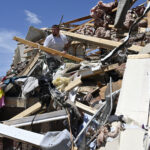Connecticut’s Department of Environmental Protection will launch a broad study on the safety of artificial turf playing fields, officials said.
Debate has been ongoing in Connecticut and nationwide over whether recycled crumb rubber used to cushion the fields endangers children and the environment.
The DEP study will examine the makeup of the crumb rubber, and check the quality of air samples and stormwater runoff near the fields for potential contaminants.
Supporters say the artificial turf fields offer cushioning to protect children from impact injuries, and do not require the pesticides and other upkeep of traditional grass fields.
Opponents say industrial chemicals from the rubber can be released into the air and water runoff, and that children and others could inhale the chemicals.
Connecticut DEP Commissioner Gina McCarthy said the study is being conducted to respond “in a credible manner” to health and environmental concerns.
The work will be conducted in conjunction with the Connecticut Department of Public Health, Connecticut Agricultural Experiment Station and University of Connecticut Health Center.
The Department of Public Health expects to evaluate the results and produce a health risk assessment in January 2010.
Karen Murphy, who has led the effort to oppose installation of two artificial turf fields in Stamford, said she is heartened the state will undertake the study. The city should not rush to finish existing turf projects before the results are available, she said.
“These artificial turfs have not been proven safe environmentally and healthwise,” Murphy said. “It’s very important that these studies be done now and not that seven, eight years from now we find out the impact.”
Murphy is not alone in her opposition to turf fields. In August, state Rep. Kimberly Fawcett, a Democrat whose district includes Fairfield and Westport, said she supports a moratorium on new fields until the state DEP concludes an analysis.
Stamford Mayor Dan Malloy said the city has reviewed many studies on the subject and found the merits of the fields “far outweigh” any negative effects.
He also said he opposes recommendations by some opponents to consider removing existing artificial turf fields.
“I doubt very much that we’re going to outlaw artificial turf,” Malloy said. “If they made those recommendations, it would be opposite of all of the studies that have taken place.”
This summer, Stamford officials briefly shut down the 11-year-old field at Stamford High School when testing found lead levels to be high. The field has since been reopened to all but young children.
The city’s newest fields will not contain the same type of synthetic fibers that have been found to contain lead, according to the contractor on the projects.
Many Stamford parents, frustrated in the past by a lack of soccer facilities, have pressed for the construction of new turf fields. When the issue went before the city’s Zoning Board in September, more than 30 parents and their children showed up to support the plan.
___
Information from: The Advocate
Was this article valuable?
Here are more articles you may enjoy.

 Cars Are Getting Smarter. Why It Matters for Claims Professionals
Cars Are Getting Smarter. Why It Matters for Claims Professionals  Citi Reverses Course on Firing of Japan Trader Five Years On
Citi Reverses Course on Firing of Japan Trader Five Years On  Four Ex-VW Managers Convicted in Germany Over Diesel Scandal
Four Ex-VW Managers Convicted in Germany Over Diesel Scandal  Central US Severe Weather Outbreak Caused Billions in Damages, AccuWeather Says
Central US Severe Weather Outbreak Caused Billions in Damages, AccuWeather Says 